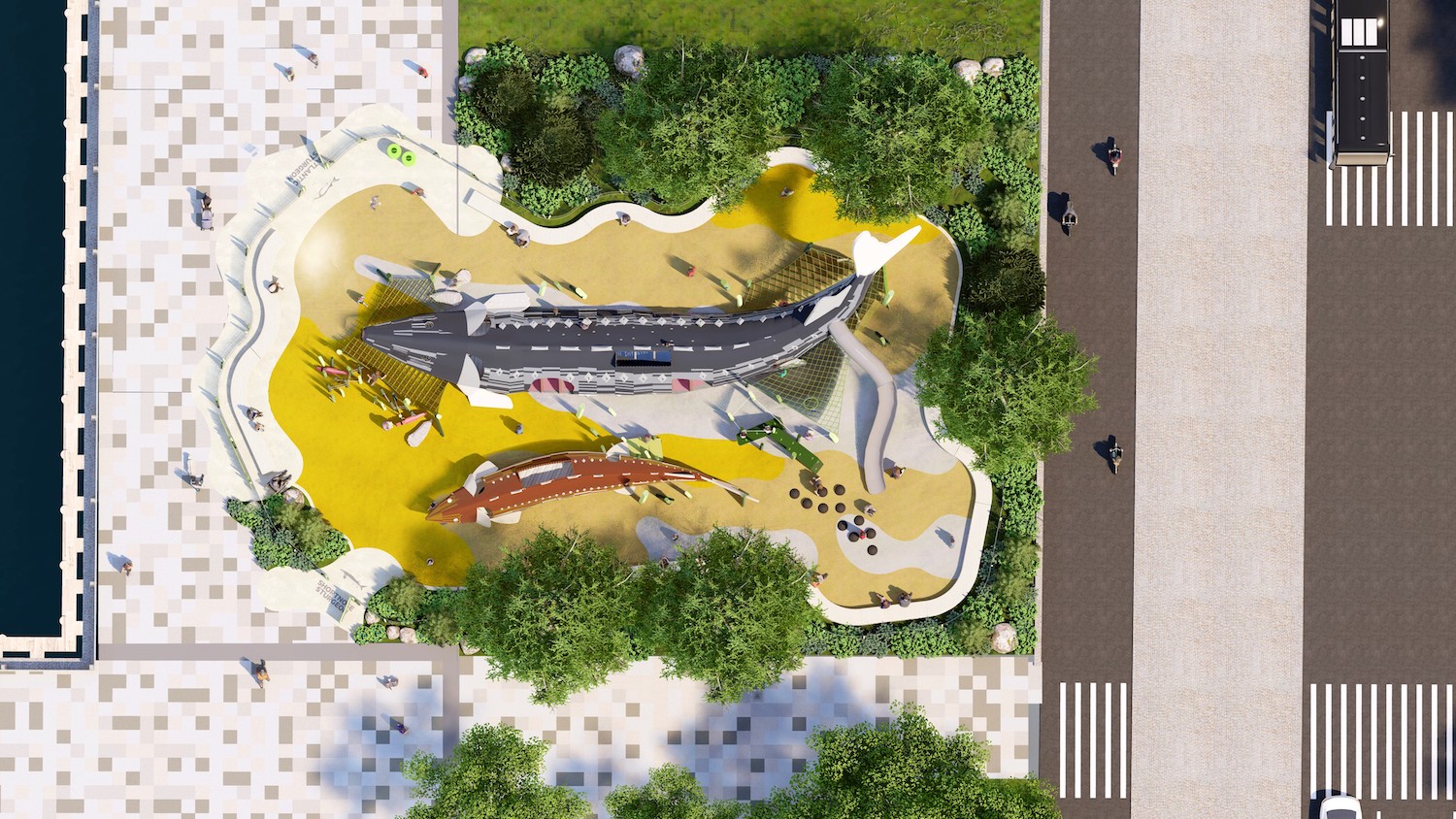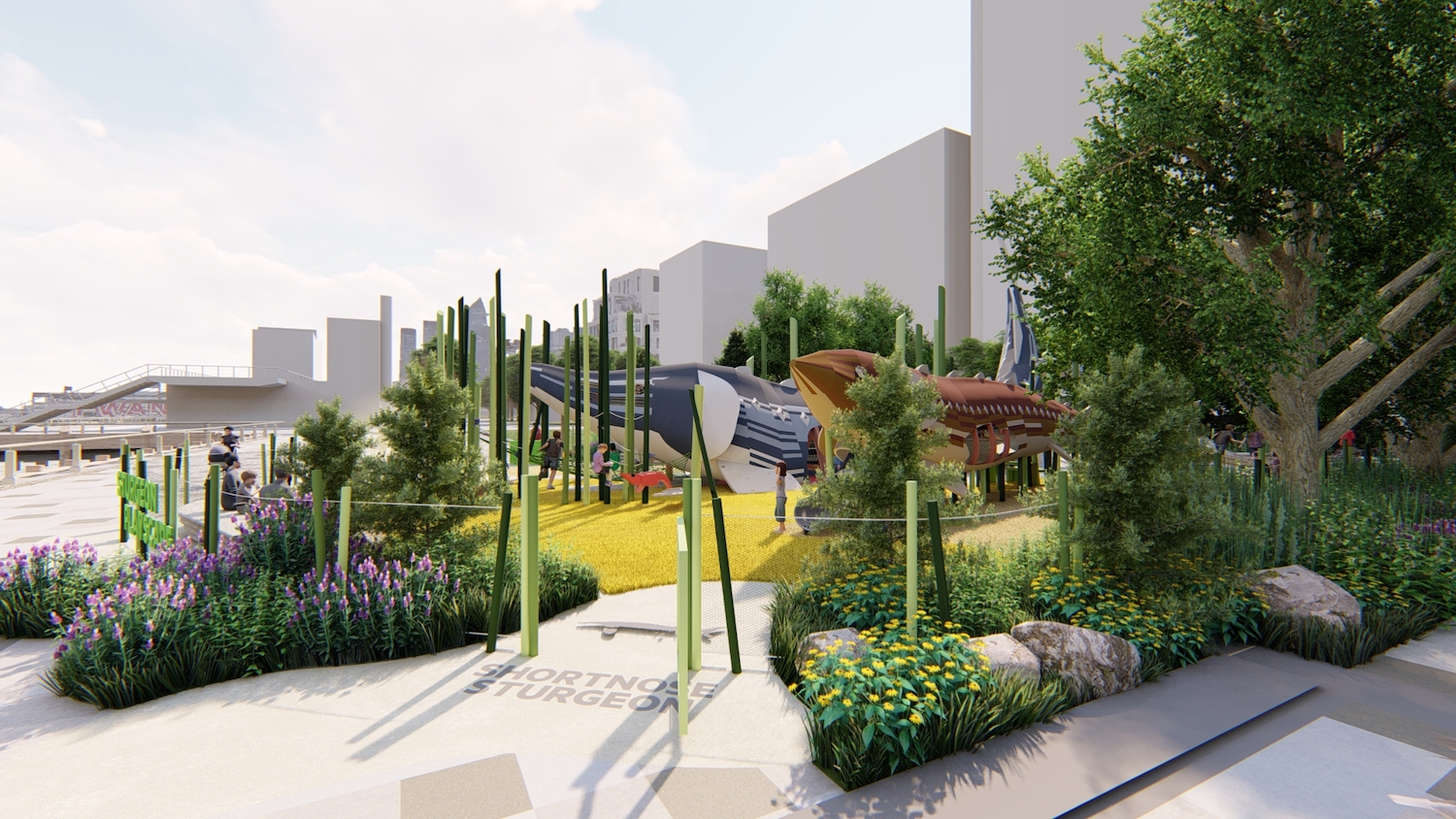A new recreational space in Hudson River Park will include play elements inspired by marine science to teach children about the local ecology. The 4,000-square-foot space on Pier 26 at North Moore Street is being developed by the Hudson River Park Trust, which broke ground on the space yesterday. Designed by OLIN, the interactive sculptural elements are inspired by wildlife and the Hudson River habitat and will also serve as an outdoor extension of the environmental programming planned for the future Hudson River Estuarium.
The science play area will complement the offerings at the adjacent Pier 26, which is also designed by OLIN and features a habitat walk through several ecological zones, a sunning lawn, sports area, and an engineered rocky tidal marsh. The Hudson River Estuarium will also be adjacent to the play area, and become a center for marine science research and public education on river ecology.
“Hudson River Park is one of our city’s most treasured green spaces, especially for our youngest residents, which is why we’re so excited to start construction on the Pier 26 Science Play Area,” said Noreen Doyle, president and CEO of the Hudson River Park Trust. “This Play Area has been thoughtfully designed to advance two key aspects of our mission: play and environmental education. We are incredibly thankful to Hudson River Park Friends, Mike Novogratz, borough president Mark Levine, council member Chris Marte, and all who donated generously to make this imaginative project come to life. Hudson River Park is so grateful to all our elected officials and our community for their tireless advocacy and support, year in and year out.”
The science play area will be the fifth play area in Hudson River Park and will further the Hudson River Park Trust’s mission for science and environmental programming. The play structures will be in the shape of the Atlantic sturgeon and the shortnose sturgeon, two endangered species native to the Hudson River. Children will be able to climb inside each of the structures and interact with other play features that focus on local wildlife. Additional elements include trees, landscaping, a perimeter seat wall, climbing nets, misting features, and safety surfacing.
“It gives me such pleasure to see this playground getting started,” said Michael Novogratz, former chair of Hudson River Park Friends. “It will spark the imaginations and curiosity of thousands of NYC children while giving them a great new space to play and learn about the Hudson River’s unique ecology. I am proud to have kickstarted this fundraising campaign with a lead gift for its construction. Our whole community should support the Park in whatever form they are able. It provides such enjoyment to millions of New Yorkers.”
Funding comes from Hudson River Park Friends, the fundraising partner of the Hudson River Park Trust, which raised approximately $4 million for construction of the play area. Additional funding came from city council member Chris Marte and Manhattan borough president Mark Levine.
The play area is expected to open to the public in 2023.
Subscribe to YIMBY’s daily e-mail
Follow YIMBYgram for real-time photo updates
Like YIMBY on Facebook
Follow YIMBY’s Twitter for the latest in YIMBYnews




Won’t complain about a new park, but the design is baffling. Why convert beautiful waterfront outdoor space into a predominantly indoor-oriented use?
And it brings along a host of questions—can parents see their kids from the outside, how will these be inspected for homeless people sleeping, how will they be cleaned, etc.
Hopefully the end result proves me wrong, but this seems like a waste of money and prime example of over-designing. A simpler, more typical park would be better. (The blue “multi-use play area” on Pier 26 is another example—a regular grass field would’ve been better.)